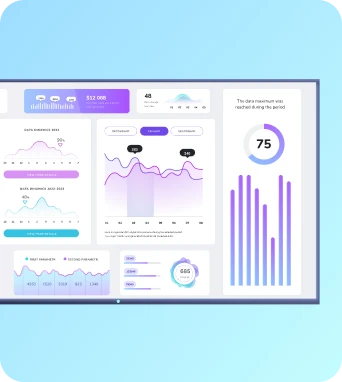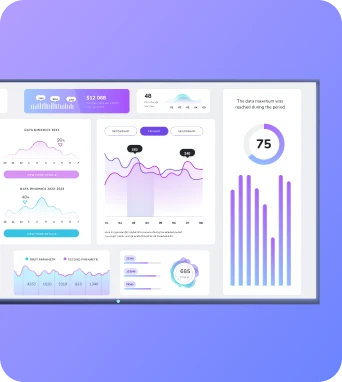Whether you’re a current Jira Service Management user or just kicking the tires, you might be starting to wonder if Jira is really the best fit for your ITSM needs.
Maybe it feels too complex. Maybe the integrations aren’t as smooth as you’d like. Or maybe you’re just curious if there’s something out there that’s easier, faster, or more affordable.
The good news is, you have lots of options.
We’ve rounded up the best Jira alternatives for ITSM workflows so you can compare features, pricing, and unique strengths at a glance. They are:
- Zammad: Best alternative with an open-source helpdesk
- Snipe-IT: Best for asset management
- Hiver: Best for teams using Gmail
- Mojo Helpdesk: Best for schools and nonprofits
- Vision Helpdesk: Best for all-in-one ticketing + ITSM + satellite helpdesk
- Gorgias: Best for e-commerce
- SupportBee: Best for email support
- Cayzu Help Desk: Best for small IT teams
We’ll cover what each one is best at, what it costs, and what limitations to watch for so you can make the right call for your business.
But first: Why companies choose Jira alternatives
Jira is an IT service management (ITSM) tool designed for mid-size and fast-growing brands. Originally built as a bug-tracking system for software developers, it has since grown into a massive platform for issue tracking, project management, and IT workflows.
Today, thousands of teams rely on Jira to log tickets, manage service requests, and customize workflows for IT and DevOps. But just because it’s recognizable doesn’t mean it’s the right fit for every business. For many teams, it’s a little less ‘dream tool’ and a little more ‘overpriced bloatware.’
Here’s a laser-fast look at why some companies start shopping around:
Pricing is high and not always scalable

Jira can get expensive quickly, especially as your team grows.
Sure, there’s a free plan, but that dries up after 10 users. You also have to deal with limited storage and the lack of 24/7 support. All of these things require more upgrades.
And don’t forget: the smaller your team is, the more you’ll pay. If you’re a team of 11, pricing starts at $8.60 per user per month for the Standard plan. It’s nearly $5 more per user per month compared to teams of 300+ users. Unless you’re a large enterprise team, this might get expensive over time.
Keep in mind there are lots of other arbitrary limitations that require additional upgrades:
- Storage
- Email notifications
- Automation runs
- Audit logs
- Guaranteed uptime SLAs
What starts as an affordable tool for a handful of users can balloon into a hefty monthly bill once you add more seats and advanced features. For small businesses or lean IT teams, the pricing often doesn’t make sense.
Complex learning curve for growing brands
Jira is a super powerful platform — but with that power comes extra complexity.
Users say that setting up projects, customizing workflows, and onboarding new team members can take significant time and training.
See for yourself:


In other words: smaller businesses with limited resources may find the learning curve too steep compared to more intuitive ITSM platforms.
This user sums it up well:
“The real problem with Jira is that it's too customizable, which makes it easy for people to develop painful workflows and systems. Jira has too many complex options and many project managers feel a need to use as many of the features as they can. If you have an ambitious project manager with Jira admin privileges, you can end up with a mess of workflows, tickets with way too many fields, and other busywork that makes Jira painful to use.” — Reddit
Limited features for digital signage
Jira was originally built for software development, and while it has branched out into ITSM, it still feels optimized for dev-heavy teams.
If your IT needs include things like digital signage integrations, simpler service desk setups, or cross-department collaboration, Jira can feel restrictive without heavy customization.
TL;DR: if your IT workflows involve keeping employees or customers updated on big screens, Jira won’t cut it out of the box. Companies that want dashboards or digital signage integrations often look elsewhere.
Including the alternatives we talk about below. 😁
Zammad: Best alternative with an open-source helpdesk

Zammad is a free and open-source helpdesk that comes with ITSM extensions so you can customize your helpdesk to your liking. It offers almost everything you can get from Jira, plus eight additional support languages, S/MIME, and text modules. Zammad is also 100% free and open source unless you need support, which is bound to be cheaper per user per month.
Just keep in mind customer support with Zammad can get pricey: €5 to €24 per user per month depending on the level desired. Plus, Zammad is an open-source product designed for customization first. Some users say the base appearance isn’t necessarily appealing, and there might be a learning curve that prevents you from getting started fast.
Key features of Zammad
- Customizable workflows
- Integrated knowledge base
- Visual process designer
- Asset management
- Reporting and analytics
What Zammad users say
“Being an open-source product, Zammad is free for you to host yourself. It also includes SSO out-of-the-box and other helpful features. Thus, it's got a very low barrier to entry with no complicated authentication matters. It allows multiple agents, tagging, and for ticket catagorisation. But it's not as polished as products like ZenDesk. In fact, it's not really an awesome experience. Some things you'd think ought to be standard are either not implemented or not implemented well or a bit clunky.” — G2
Zammad pricing

Zammad’s help desk software is technically free and open source, but if you want more impressive features (like customer support), prepare to pay up.
Here are your options for hosted plans:
- Starter: €5 per agent license per month for five agents, email support, and 10 MB attachments + 10 GB disk space
- Professional: €15 per agent license per month for unlimited agents, phone and email support, and 35 MB attachments + 25 GB disk space
- Plus: €24 per agent license per month for SLAs, multiple integrations, and 50 MB attachments + 50 GB disk space
Self-hosted plans are also available between €2,999 and €9,999 per year.
Snipe-IT: Best for asset management

Snipe-IT is an open-source IT asset management system (ITAM) that can help track inventory lifecycles and keep compliance tidy. You can think of it as a virtual ‘closet’ for your IT team so they can manage, catalog, and account for every laptop, monitor, phone, and software license in your business.
Unlike Jira, which offers modules for just about everything, Snipe-IT stays focused on doing one thing really well — asset management.. Plus, being open source, it’s free to host on your own server (with optional paid hosting for those who don’t want the headache).
Just keep in mind that Snipe-IT isn’t a full ITSM solution. You’ll likely want to use it alongside another ITSM or helpdesk platform to build a complete Jira alternative for your business.
Key features of Snipe-IT
- Centralized asset tracking
- Custom fields for hardware/software info
- Assignment history per employee
- License management
- Barcode/QR code generation
- REST API for integrations
What Snipe-IT users say
“The demo looked nice, all the elements I need, assets, licenses, and user management. I spun up a VM, installed WAMP, and refreshed my brain on all that (probably been 5+ years since I touched any of them) and then fought through the install. It was all worth the headache. Great product, highly recommend it, and almost stunned it has no cost for how feature-rich and clean it is.” — Reddit
Snipe-IT pricing

As mentioned, Snipe-IT is 100% free if you self-host. But you can also pay for their hosted service if you’d rather skip the server management.
Prices include:
- Basic Hosting: $39.99 per month for 120 API calls, plus automated upgrades, backups, and server maintenance
- Small Business Hosting: $99.99 per month for 240 API calls, increased LDAP memory, and site IP restrictions
- Dedicated Hosting: $249.99 per month for infinite API calls, a private server, VPN connectivity, and server-wide IP restrictions
Hiver: Best for teams using Gmail

Hiver was designed to turn regular Gmail inboxes into fully functional helpdesks you can share with your team. Instead of bouncing between multiple tools, your IT agents can assign, track, and collaborate on tickets directly in Gmail. This makes it a great choice for small IT teams that already live inside Google Workspace.
Compared to Jira, which acts as its own separate ITSM, Hiver is a lightweight alternative built in an inbox you already own. It doesn’t overload you with bells and whistles, but it does streamline customer (or employee) support with shared inboxes, real-time notes, and SLA tracking.
But Hiver probably isn’t the right fit if your team doesn’t use Google Workspace every day — it doesn’t integrate with any inbox outside of Gmail. It’s also laser-focused on teams who want to stay in their inbox. It’s not necessarily what you’d call a standalone ITSM tool per se.
Key features of Hiver
- Shared inboxes in Gmail
- Email delegation & ticket assignment
- Collision detection (no double replies)
- SLA and analytics dashboards
- Automation rules & workflow templates
- Real-time collaboration notes
What Hiver users say
“Hiver allows us to manage our shared email alias seamlessly without the need to switch to a separate platform. The ability to assign emails to specific team members, add internal notes, and track email statuses (open, pending, closed) has helped us ensure accountability and avoid duplicated efforts. It has essentially turned our inbox into a light but effective helpdesk. However, one drawback we've noticed is that Hiver can slow down the Gmail interface, especially when handling a high volume of emails or switching between conversations. While the features are helpful, the performance lag can occasionally disrupt workflow.” — G2
Hiver pricing

Hiver offers five cloud-hosted plans, all with per-user pricing:
- Free: $0 per user per month for
- Lite: $19 per user per month, shared inboxes, email assignments, and basic automation
- Growth:
- Pro: $49 per user per month for SLA tracking, advanced automation, and analytics dashboards
- Elite: Custom pricing for round-robin assignments, advanced reporting, and dedicated support
Mojo Helpdesk: Best for schools and nonprofits

Mojo Helpdesk was built with simplicity in mind — which is why it’s a favorite for schools, nonprofits, and smaller teams. It’s a lightweight but reliable alternative to Jira that focuses on ticketing, customer service, and asset management.
Mojo Helpdesk is also one of the more affordable tools on this list, with special discounts for education and nonprofit organizations (up to 25% off). It’s a budget-friendly option if you need IT service delivery and don’t have the budget or patience for bloated ITSM tools.
But Mojo’s simplicity can be a double-edged sword. Since the platform keeps things simple, you won’t get as many advanced automations or deep reporting features as tools like Jira. Plus, users also say customizing your dashboard can be clunky unless you have a decent programming ability. But for basic service desk needs, it gets the job done.
Key features of Mojo Helpdesk
- IT service desk
- Customer service
- Asset management
What Mojo Helpdesk users say
“It is a very simple ticketing system. It does this well and provides this for a fraction of the cost of most other systems. It is easy to learn without too much trouble. But there are very few automations, their support is not too helpful in getting the most out of their platform. Extracting data from Mojo is a task and a half as this can only be done via API.” — Software Advice
Mojo Helpdesk pricing

There are three low-cost plans to choose from:
- Team: $14 per user per month for full ticket tracking, SLA management, time tracking, Google integrations, and more
- Business: $24 per user per month for ticket merging, agent permissions, KPIs, and white-glove service
- Enterprise: $34 per user per month for advanced reporting, HIPAA compliance, increased quotas, and dedicated account management
Vision Helpdesk: Best for all-in-one ticketing + ITSM + satellite helpdesk

If you want a single platform that checks multiple boxes, Vision Helpdesk might be your best bet. It’s built for teams that want flexibility, with modules covering:
- Ticketing
- ITSM
- Customer portals
- Satellite helpdesk support
- Incident management
- Asset tracking
Vision’s standout feature is multichannel support: your team can handle tickets from email, phone, chat, social media, and web forms in a centralized hub. That means fewer lost requests and less time wasted bouncing between tools. You can even use built-in automations to manage most of this remotely, like routing tickets and enforcing SLAs.
But you should know that with great power comes… a bit of a learning curve. Some users report the UI feels cluttered and overwhelming at first, which means you may need training to fully unlock the platform’s potential. Plus, pricing with Vision Helpdesk can seem extremely overwhelming unless you’re already familiar with ITSM tools.
Key features of Vision Helpdesk
- Incident management
- Multichannel support
- Ticket billing
- Automation options
- Access management
- Client portals
What Vision Helpdesk users say
“What I liked most about Vision Helpdesk is the multi-channel support. It allows businesses to support their customers on multiple platforms, which increases the base of customers and reduces complexity for helpdesk agents [in a time] where being customer-centric is the most important aspect of a business. One downside which I personally felt during the initial days was that it feels a bit overwhelming as there are multiple features and not every feature can be used by all the teams that use Vision Helpdesk. Training is definitely required to operate and customize Vision Helpdesk to its highest potential so it can be fruitful to the company.” — G2
Vision Helpdesk pricing

There are three ways to buy Vision Helpdesk for your team: on the cloud, with a recurring license, or with a one-time license. Just keep in mind each plan’s features and benefits aren’t very clear unless you’re willing to dig through comparison charts.
Here are your options broken down at a glance:
SaaS Cloud License*
- Starter Helpdesk: $12 per agent per month
- Pro Helpdesk: $20 per agent per month
- Satellite Helpdesk: $24 per agent per month
- Pro Service Desk: $32 per agent per month
- Ent Service Desk: $48 per agent per month
*Only available in the US, UK, England, and India
Download Recurring License
- Starter Helpdesk: $8 per agent per month
- Pro Helpdesk: $16 per agent per month
- Satellite Helpdesk: $20 per agent per month
- Pro Service Desk: $24 per agent per month
- Ent Service Desk: $32 per agent per month
Download One-Time License
All plans come with one year of free support and software updates, plus a few unique features depending on your tier.
- Starter Helpdesk: $200 per agent
- Pro Helpdesk: $400 per agent
- Satellite Helpdesk: $500 per agent
- Pro Service Desk: $600 per agent
- Ent Service Desk: $800 per agent
Keep in mind these are one-time fees for every agent on your team.
Gorgias: Best for e-commerce teams

If your business runs on Shopify, BigCommerce, or Magento, you might use Gorgias to supercharge your customer support. It’s built specifically for e-commerce teams and comes with out-of-the-box integrations for the biggest online storefronts. That way, your agents can see order history, refund options, and shipping updates without tab-hopping across platforms.
Gorgias also leans heavily into automation with features like macros, triggers, and an AI-powered agent. You can also add SMS and voice channels to the system so that customers have more ways to reach you — all in a single inbox for your support team.
The trade-off? Pricing. Gorgias gets expensive as your ticket volume scales, so it’s not always the best option for startups or smaller shops trying to keep costs low. Some users also mention there’s a learning curve during setup, as well as performance hiccups when managing very large ticket loads.
Key features of Gorgias
- Helpdesk
- AI agent
- Automated support flow
- Voice and SMS channel add-ons
- Centralized inboxes for teams
What Gorgias users say
“Gorgias’ ability to streamline customer support processes through automation and integration is one of the features I like most. The automation function, such as macros and triggers, helps reduce wait/response times and enhances team productivity. Integrations with various e-commerce platforms offer valuable insights to agents without needing to jump from one system to another. But the downside is its pricing structure, as it may seem pricey for startup brands with limited budgets. First-time users may also find the system overwhelming during the initial setup, especially if they haven't used other helpdesk platforms.” — G2
Gorgias pricing

Unlike Jira, Gorgias’ pricing is based on the number of support tickets you receive.
Here’s what you can expect to pay depending on your volume of tickets:
- Starter: $10 per month for up to three user seats, 50 billable tickets, plus $0.40 for all overage tickets
- Basic: $60 per month for up to 500 user seats, 300 billable tickets, and +$40 for every additional 100 tickets
- Pro: $360 per month for 2,000 billable tickets and +$36 for every additional 100 tickets
- Advanced: $360 per month for 5,000 billable tickets
- Enterprise: Custom price for billable tickets and overage fees
Keep in mind you can pay extra for ‘automated tickets,’ which let you resolve user issues without getting any human IT resources involved.

SupportBee: Best for email support

SupportBee is about as simple (and budget-friendly) as it gets for teams that use platforms other than Email. 😏 This is an email-based ticketing system that turns customer emails into manageable tickets without forcing you to learn an entire ITSM platform. It’s sotra like a shared inbox on steroids: you can assign tickets, loop in teammates, and keep everything transparent without endless CC chains.
SupportBee also comes with a lightweight knowledge base and customer portal so you can publish FAQs and help docs to reduce repetitive requests. Add in its 20+ integrations (plus API access for custom builds), and you get a lean solution that still connects to the rest of your stack.
But as we’ve mentioned earlier, simplicity cuts both ways. Users say SupportBee isn’t built for massive support operations. Plus, large knowledge bases might start to feel clunky and hard to navigate. If you’ve got thousands of articles to organize or need advanced automations, you’ll probably feel the limits here more than with another Jira alternative.
Key features of SupportBee
- Shared inboxes
- Knowledge base
- Customer portal
- Basic and enterprise integrations
- Access to the API
- Unlimited email inboxes and tickets
What SupportBee users say
“Does a few things very well. Lightweight support solution, lightweight knowledge base that can be deployed to a custom URL. Ability to set organizational access (everyone in a group can access each other's tickets, etc), and assign tickets to various members of our support staff. But knowledge base could use much (much!) better organizational tools. Anything more than two dozen resources are difficult to organize.” — G2
SupportBee pricing

There are two tiers to choose from:
- Startup: $15 per user per month for a shared inbox, knowledge base, and basic integrations
- Enterprise: $20 per user per month for everything in Startup, plus access to customer portals and enterprise integrations.
Cayzu Help Desk: Best for small IT teams

If Jira feels like using a bulldozer to plant a flower bed, Cayzu is more like a hand trowel. It’s a lightweight ITSM and ticketing platform that doesn’t try to overwhelm you with bells and whistles, but still comes with enough power to streamline daily support operations.
With Cayzu, you get global support, mobile apps for on-the-go ticketing, a self-service portal, and a built-in knowledge base. You can also use automated rules and workflows to cut down repetitive work. Plus, there are plenty of app integrations that connect Cayzu to the rest of your tool stack.
Fair warning: past users say the platform can feel a little dated in spots — both in UI and documentation — and feature rollouts aren’t always predictable. But what it lacks in polish, it makes up for in friendliness. Cayzu’s support team is well-loved for being responsive, approachable, and willing to listen.
Key features of Cayzu Help Desk
- Global support
- Mobile apps
- Self-service portal
- Knowledge base
- App integrations
- Automated rules and workflows
What Cayzu Help Desk users say
“A lot of products have flashy gizmos and widgets. Cayzu takes a more simplified and welcoming approach. Working on their platform can be a refreshing and relaxing experience, which is always welcome when the nature of work inside of it is typically resolving issues for end users. Our experiences with Cayzu seemed to have occurred during one of their growth spurts, which has pros and cons. One con is that the implementation of new features was random and not very structured. We never knew when our interface could change or new capabilities be added. The upside to this, however, was that their friendly staff were always willing to sit with us, listen to our pain points, and make legitimate efforts to resolve them. Refreshing compared to the service we have now.”
Cayzu Help Desk pricing

Cayzu offers five separate plans depending on the features and scalability you need. Unfortunately, its calculator feature is currently broken, so there’s no way to see how much these plans cost online.
Here’s a quick breakdown of the features to expect:
- Basic: Access to email and social channels, a basic knowledge base, and the web widget
- Team: Automation rules, app integrations, time tracking, custom domain mapping, and collision detection
- Pro: Multilingual content, reports and dashboards, SLAs and business hours, single sign-on, custom fields, asset management, multiple ticket forms, and CSAT surveys
- Enterprise: Custom agent roles, multi-brand support, custom ticket views, agent round robin, ticket dependencies, and access to the REST-based API
- Enterprise Plus: Access to IP whitelisting, 99.9% uptime SLA, and a custom license agreement
Keep in mind there’s a 14-day free trial available for any of Cayzu’s plans.
Honorable mentions for the best Jira alternatives
While not directly included on this list, we’d be remiss not to mention the following ‘honorable mention’ Jira competitors:
- GLPI: Best for open-source IT asset and service management
- Deskero: Best for multichannel support
- Kayako: Best for live chat and automation
- ProProfs Help Desk: Best for new service teams
- Front: Best for shared inboxes
Choosing the best Jira alternative for your business
There are (quite literally) hundreds of potential Jira alternatives. So how do you make the best possible choice?
We’ve gathered up a few questions below to help you whittle down your shortlist and make the most informed decision.
- Pricing: Pricing isn’t everything, but does the tool fit your budget? Some platforms are relatively cheap upfront, but quickly get pricey when you add more users, features, or integrations.
- Ease of use: Can your team use the ITSM platform without weeks of training? A Jira alternative should simplify your life, not require a 50-page manual.
- Ability to scale: Think about your business in the future. Will the platform grow with your business? Or will you need to jump ship once you hit 50, 100, or 500 users?
- Current and future features: What do you need right now (like ticketing or incident management), and what might you need down the line (like asset management or AI automation)? Make sure your shortlist covers both.
- Customer support and responsiveness: When, not if, something breaks, how quickly can you get help? Look for providers with responsive, human support instead of leaving you stranded with forums.
- Ability to integrate with digital signage platforms: Bonus points if the tool plays nicely with your existing stack, including signage dashboards, analytics tools, or other digital signage integrations.
Frequently asked questions about Jira alternatives
Q: What are the alternatives of Jira?
The best Jira alternatives include:
- Zammad: Best alternative with an open-source helpdesk
- Snipe-IT: Best for asset management
- Hiver: Best for teams using Gmail
- Mojo Helpdesk: Best for schools and nonprofits
- Vision Helpdesk: Best for all-in-one ticketing + ITSM + satellite helpdesk
- Gorgias: Best for e-commerce
- SupportBee: Best for email support
- Cayzu Help Desk: Best for small IT teams
Q: Who is Jira's biggest competitor?
That depends on who you ask — but generally, Jira’s biggest ITSM competitors are tools like SupportBee, ServiceNow, or Zendesk for ITSM-style ticketing. Basically, anyone offering task tracking, collaboration, or IT workflows is in the same arena.
Q: What is Microsoft's equivalent to Jira?
Microsoft’s closest equivalent is Azure DevOps, which was formerly known as Visual Studio Team Services. But keep in mind it was built with developers in mind. So if you’re more focused on lightweight project management, Microsoft Planner or even Teams might be simpler options.
Q: Is Jira being discontinued?
Nope — Jira is alive and well. What has changed is Jira’s focus. Atlassian is pushing users toward Jira Cloud rather than its legacy on-premises Jira Server, which officially hit end-of-life in February 2024. If you’re on Server, that’s the “discontinuation” people are talking about. But rest assured Jira isn’t going anywhere.





